I now officially consider myself a KTM owner. No, my name wasn't on the title, but I put enough saddle time, elbow grease and 91-octane into our 2006 250 SX-F to justify ownership all the same. In our "Fixing the 2006 MXers" article in the May '06 issue, I said I wanted to run the KTM all year for a couple of reasons. One was due to the fact that I had never really ridden the orange bikes, and I felt I should for both the large KTM readership we have and out of sheer curiosity for this particular bike. The other reason was to observe the durability of a machine I knew nothing about. I went into this test with a clean slate and came away with a great impression.This bike wasn't just a motocross practice bike. True, most of the 50 hours I accumulated throughout the past year have been from buzzing around local tracks on practice days and numerous minor races. But this bike also went six hours straight through a grueling, muddy endurance race and did its fair share of 45-minute grand prix-style events. Basically, I didn't baby it. I abused it like you or your kid would, with no special attention to internal maintenance save for oil changes every five to eight hours, a valve check at 32 hours (which showed no real movement of the valve train) and a complete top end rebuild near the end of the testing year (45 hours).When we tore into the motor at KTM's shop for this wrap-up and year-end rebuild, we discovered a lot of nothing. First, prior to cracking loose a bolt, we did a standard leak-down test. For those who don't know, a leak-down test determines the condition inside an engine by pumping it full of air and measuring how much leaks out. The more worn out the engine is, the more air leaks out. It's simple. Well, this KTM 250 four-banger showed consistent readings of less than 4 percent leak-down. We kept trying, but the engine internals were certifiably tight and refused to leak down anymore than that. At that point, KTM's top in-house technicians doubted the need for a top end rebuild. We did one anyway because none of us, including the head of KTM's press department, had ever torn into one of these motors. This wasn't out of laziness on their part, they'd just never needed to do it! Before we tore off the cylinder head, we rechecked the valves. They were still well within spec even after enduring more than 13 hours since we last looked. Then we pulled everything apart to inspect for wear and tear. The piston coating was barely worn away; under the micrometer it was only one-sixth of a 1000th off of stock. The rings were in decent shape but were a little sharp on the edges, and this was essentially the extent of engine wear. So we replaced the rings, buttoned up the engine and called it good.The only funny business we had was upon reassembly. Although the bike ran perfectly, it, for no reason, began overheating and spitting coolant. We suspected the worst, a blown head gasket or something allowing pressure into the cooling system from our rebuild. We checked all this and were relieved to find that the problem was that the air was never bled out of the head and radiator, not allowing proper cooling. This was easy to fix by just using the bleed-off bolts and adding some coolant. Then our problem was cured.Wrap your maintenance-cost-calculating brain around this for a minute. We essentially owned and abused a bike for a year, and our only maintenance expense was oil, fuel, filters and some suspension servicing-operating costs, really. I'd say we got an immense value.
While we were hanging around the race shop with nothing to fix, the race team guys kept coming by and asking what jetting we were using. "Stock," I would reply. Then they'd ask how the clutch held up. "It's stock," I'd say, "plates and everything." Sure, I could have replaced the clutch plates a few hours before I turned the bike in to freshen up the initial bite of power, but was it necessary? Not even close. This bike was a solid performer all year.I learned a lot more about the KTM as well. For one, the motor characteristics of these small-bore '06 SX-Fs are similar to those of a two-stroke. You wind it up, carry the momentum and, when the time is right, unleash the top-end demons to wreak havoc. This is good and bad. It's a big barrel of fun once you get the hang of it, and even chasing down those pesky 450s is easily handled. But if you're jumping straight off a Japanese bike, you'll be wondering what takes the KTM so long to get it pulling. We found the best fix was gearing, but nothing else made a serious dent in the bottom-end blues.And of course, there's the suspension thing. The KTM suspenders take about two rides to get used to when coming off a Japanese bike. Then they work very well. The misconception of poor suspension performance is just that. And a couple of hours in the suspension shop to add the personal touch that some riders prefer can make it a great-working system.In conclusion, I have to admit I fell in love with this orange bike. It could be that it's just different-or it could have something to do with it never letting me down.Running Tally
Hours on Bike: 49.9 (13.9 since last update)
Modifications: $2741.69
Precision Concepts Fork/shock Polish service: $50
1X International Rebound Adjusters: $69.99
Roc Stompa Footpegs: $199.99
Maintenance and Repairs: $786.66 (not including tires)
Compression Ring: $11.07
Head gasket: $14.42
Base gasket: $2.45
Oil ring: $14.32
Suspension service:Precision concepts oil change service, including fluids: $162
Oil Change Parts (3 changes, 2 with filter):3 quarts Motorex Cross Power 4T 10W50 Oil: $13.95 ea.
2 KTM Oil Filters: $9.10 ea.Air Filter maintenance:3 Twin Air Bio Factory PreOiled Filters: $28.95 ea.
PC Racing Flo filter system: $24.95
Bridgestone M402 rear tire: $96.95

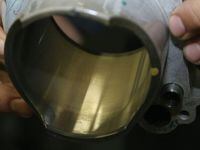
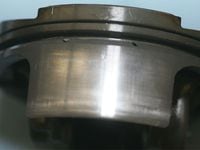
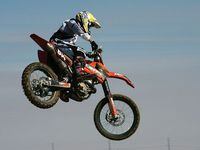
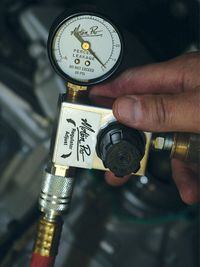

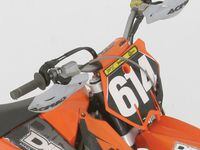
/cloudfront-us-east-1.images.arcpublishing.com/octane/JMCDU47IXNAABEK3HT7255TFSU.jpg)
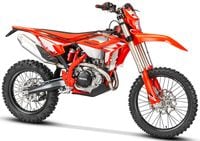
/cloudfront-us-east-1.images.arcpublishing.com/octane/ETCSEDWJV5BGXGHEZFINNZGLMA.jpg)
/cloudfront-us-east-1.images.arcpublishing.com/octane/MD56OW3SRRCBJFWV5F36BOZYUE.jpg)
/cloudfront-us-east-1.images.arcpublishing.com/octane/D3GB6FLJVVDDVCJPJR3ZG276DI.jpg)
/cloudfront-us-east-1.images.arcpublishing.com/octane/PXDBJAHBNFHIPIII2RETRYIHV4.jpg)
/cloudfront-us-east-1.images.arcpublishing.com/octane/IP7MOVDXWFCGJH5HQHH4T44UJI.jpg)
/cloudfront-us-east-1.images.arcpublishing.com/octane/Y4EZFRIEQRE7ZFINGRA2ONFGGQ.jpg)
/cloudfront-us-east-1.images.arcpublishing.com/octane/UIVE2WGHJRCGNLMDXYO2YR27PA.jpg)
/cloudfront-us-east-1.images.arcpublishing.com/octane/XVCN7KNMTFDHZMKMCH5DU5YZRU.jpg)
/cloudfront-us-east-1.images.arcpublishing.com/octane/DTPGQUZAIZAZNPRXG4V6QATIVM.jpg)
/cloudfront-us-east-1.images.arcpublishing.com/octane/Y7EYU3ZTTJFLZEA75REMWWBLSQ.jpg)
/cloudfront-us-east-1.images.arcpublishing.com/octane/TGSYZNI7UVEI7K7ULLVVQ324A4.jpg)
/cloudfront-us-east-1.images.arcpublishing.com/octane/XGKGRRHXPNDRBGPCV4FUAARLRE.jpg)
/cloudfront-us-east-1.images.arcpublishing.com/octane/4MNSJWN6UFEMTDQHVLM52C3X44.jpg)
/cloudfront-us-east-1.images.arcpublishing.com/octane/U6X2X4HGPNCYTNMPYOAN4IIJ5Q.jpg)
/cloudfront-us-east-1.images.arcpublishing.com/octane/B6ZIPVYSKVA3LHDJTGAEEMN4VM.jpg)
/cloudfront-us-east-1.images.arcpublishing.com/octane/I24MVSJBNZDALNIYUHHPVFWNZM.jpg)
/cloudfront-us-east-1.images.arcpublishing.com/octane/SIAXQ2ZOPNBYBLPKJPCHIYGG6A.jpg)
/cloudfront-us-east-1.images.arcpublishing.com/octane/2K6UXOH6I5E4HBKQVMPKA74RR4.jpg)
/cloudfront-us-east-1.images.arcpublishing.com/octane/B52ZU5WMNVF4FDYDONLARN26VU.jpg)
/cloudfront-us-east-1.images.arcpublishing.com/octane/7J4I2LIBRZB4DILKSLG54USBH4.jpg)
/cloudfront-us-east-1.images.arcpublishing.com/octane/LALZDRL5ORHUDGKA562HKNQQBM.jpg)
/cloudfront-us-east-1.images.arcpublishing.com/octane/4QSCGKH4JZACROBHROI55V6UBM.jpg)